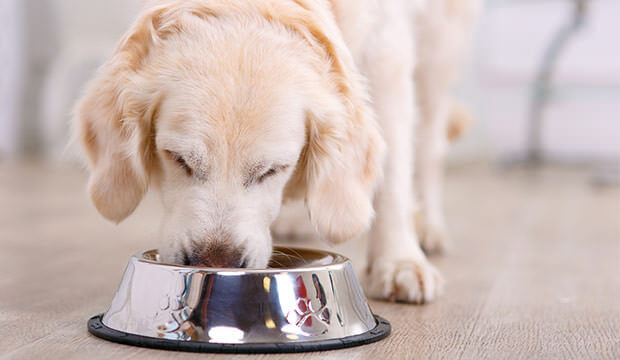No Products in the Cart
FREE DELIVERY on orders over £50

Have a dog over 7 years old? - They qualify for FREE membership to our Senior Dog Club

Have a dog over 7 years old? - They qualify for FREE membership to our Senior Dog Club

This is a great question, but unfortunately it doesn’t have a simple answer as it really depends on a few factors:
In this article we will look at why your dog might be hungry and whether you can feed larger amounts, but first let’s examine how the feeding amounts on a bag of food are calculated.
The recommended feeding amounts on a bag of food are to be used as guidance. They are based on a dog with an average amount of energy and average calorie requirements. They usually give a range, so if you have an older, less active or neutered dog (all of which require less calories) you can feed the lower end of the recommended amount, and if your dog is young, very active and entire you can feed the higher recommended amount.
However, the calorie calculations are unable to take into account individual variations such as breed, sex or the environment the dog lives in. These can all make a difference. Therefore, the feeding amounts on a pack should be used as a starting point and then the food should be adjusted as necessary. Pet food companies including Vet’s Kitchen employ nutritionists that can help give you a more tailored feeding amount for your dog.
Before making any changes, it is good idea to be able to recognise signs of overfeeding or underfeeding. Overfeeding is far more common with over 50% of UK dogs being overweight or obese.
Any sudden changes in appetite should be investigated. It is normal for young puppies, especially during a growth spurt to eat more food and pregnant or nursing bitches, may eat up to three times more than normal. However, in adult or senior dogs a change in appetite can indicate a health problem and it is important to get that checked out. Conditions that cause an increased appetite include:
If your dog has no medical reason for the increased appetite and is underweight or extremely active, then you can increase the amount you are feeding them – even if this is more than is recommended on the bag of food. However, just watch out for signs you are giving too much such as flatulence, loose or frequent stools.
Another option for underweight dogs is to feed them a higher calorie food, such as a puppy diet or a working dog food either on its own or mixed in as a proportion of their diet. This can help increase their calorie intake without feeding them larger amounts.
However, both options should be monitored to ensure that it continues to be the correct feeding regime for the dog.
If your dog is hungry, has no medical issues and is not underweight then there are things you can do to help increase satiety without adding calories:
In conclusion, determining whether you can feed your dog more than the recommended amount on the bag depends on several factors. The feeding amounts on the packaging are merely guidelines and should be adjusted based on individual factors such as the dog's weight, age, activity level, and specific nutritional needs.
If you are unsure how much to feed your dog, please do get in touch. Our nutritionist can be contacted via nutrition@vetskitchen.co.uk or 01793 887555.